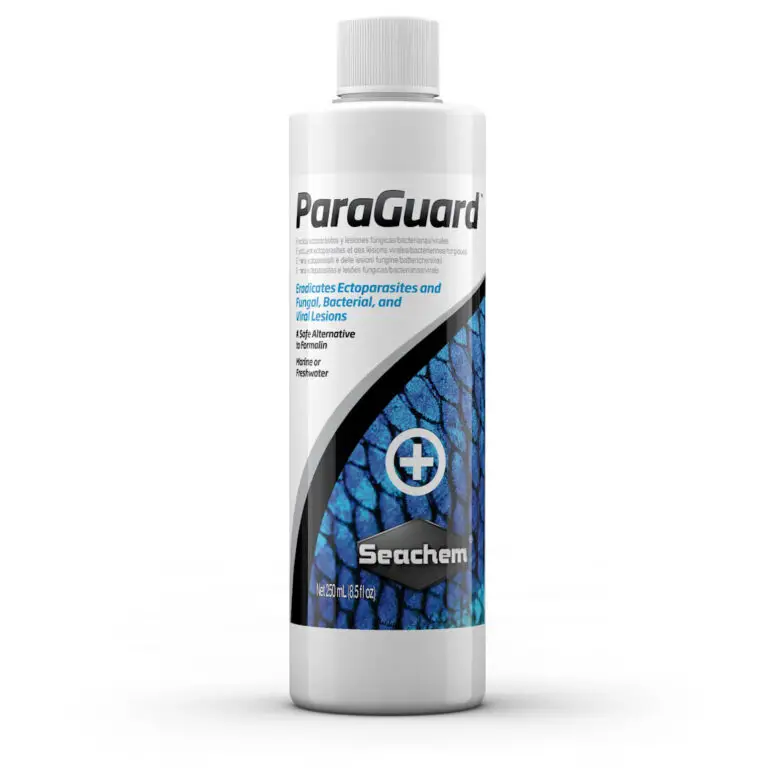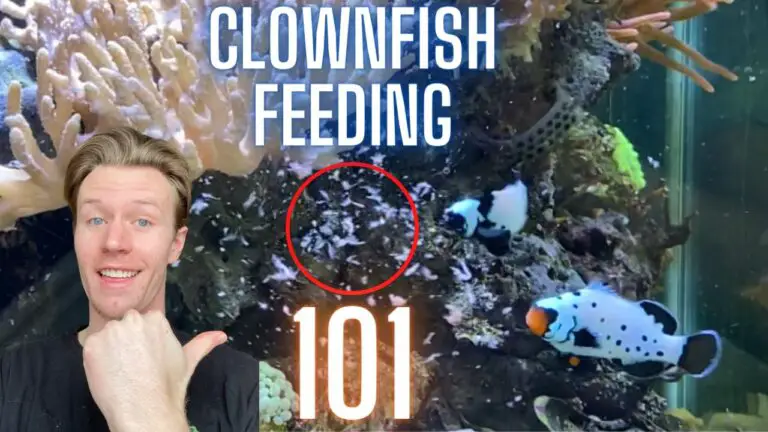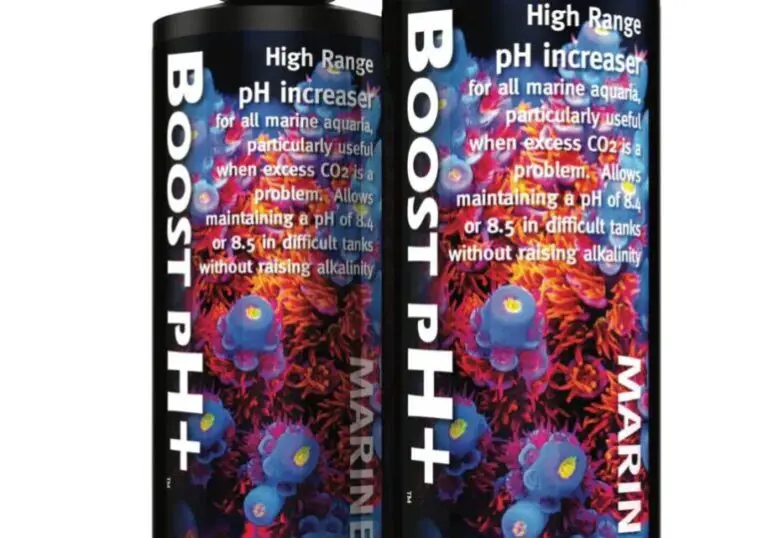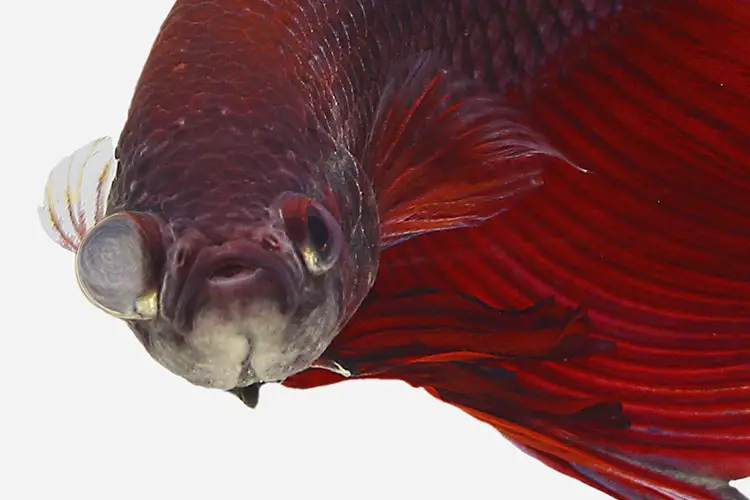Accidentally Got Soap in Fish Tank
If you accidentally got soap in your fish tank, the best thing to do is remove the water and rinse it out thoroughly with clean tap water. Make sure that all traces of soap are gone before adding fresh water to the tank. If possible, use a filter or vacuuming system to help get rid of any remaining soapy residue.
When refilling the tank, be sure not to add too much dechlorinator or other chemical treatments as this can also harm your fish. Test the pH level of the new aquarium water and adjust if needed before adding back any fish into their environment. Be sure to monitor them closely for any signs of distress such as gasping or loss of appetite which could indicate they have been affected by soap exposure.
If you have ever made the mistake of accidentally getting soap into your fish tank, don’t panic! While it’s not ideal to add any cleaning product to your aquarium, the good news is that there are steps you can take to clean up and restore balance. Start by removing any uneaten food or debris from the tank and then do a partial water change using dechlorinated water.
Once all traces of soap have been removed, use an aquarium-safe conditioner to neutralize chlorine and other chemicals in the new water before putting it back in your tank.

Credit: www.amazon.com
What to Do If Soap Gets in Fish Tank?
If soap gets into your fish tank, it is important to take the necessary steps to remove it as soon as possible. Soap can be dangerous for fish and other aquatic life in a few different ways. First, soap will disrupt the nitrogen cycle in your aquarium, making it difficult for beneficial bacteria to do their jobs of breaking down waste and keeping water parameters stable.
Secondly, soaps are often highly alkaline or acidic which can cause pH levels to spike dramatically leading to stress on fish and other animals living within the tank. Lastly, some components of soaps such as fragrances and antibacterial agents may be toxic when exposed to high concentrations over long periods of time. In order to remove soap from a fish tank you must first start by doing a large water change (50-75%), then use activated carbon or Poly Filter media in your filter system that should help absorb any remaining traces of contaminants found in the water column.
If you find that there is still an odor present after performing these steps then you may need to perform additional changes until all signs of contamination have been eliminated from the aquarium environment.
Is Soap Toxic to Fish?
Soap is a complex mixture of different compounds, some of which can be toxic to fish. The most common ingredients in soaps are surfactants (detergents), which act as wetting agents and help reduce surface tension between two liquids or between a liquid and solid. Surfactants also have the potential to damage the cells of aquatic life.
If soap enters an aquarium, it could affect the delicate balance of water chemistry that fish need for survival, including pH levels and oxygen concentrations. Additionally, if too much soap accumulates in an aquarium over time, it could cause suffocation due to foam formation on top of the water surface. Therefore, soap should never be used directly in an aquarium unless diluted with large amounts of freshwater first and then carefully monitored afterwards for any changes in water quality parameters such as pH level or dissolved oxygen concentration.
Will a Little Soap Hurt Fish?
No, a little soap will not hurt fish. In fact, it can be beneficial for them as soap helps to remove dirt and parasites that may have built up on their skin and scales. Soap is also an effective way to reduce the amount of stress in fish tanks, as it’s known to make water more hospitable for fish by reducing ammonia levels and other toxins present in the water.
It’s important to note that too much soap can cause problems for your tank—it should only be used sparingly and always diluted with plenty of fresh water before being added directly into the tank or used while cleaning tanks outside of the aquarium.
Is Shampoo Toxic to Fish?
Shampoo is a common household item, but it can be toxic to fish. When shampoo washes off of our bodies, it enters the water supply and ultimately finds its way into rivers, lakes, and other waterways. In these environments, the chemicals in shampoo can cause serious damage to aquatic life such as fish.
The active ingredients in shampoos are usually surfactants which break down lipids found on the skin’s surface; however they also act similarly to detergents when introduced to water systems by reducing their oxygen content. This decrease in dissolved oxygen levels not only makes it difficult for fish to breathe but can also disrupt their natural feeding patterns which reduces their ability to grow and reproduce successfully. Additionally certain fragrances used in many shampoos may have an even more significant effect on fish populations than just altering the pH balance or decreasing oxygen levels due to potential hormonal disruption caused by synthetic musks that are present most modern formulations of shampoo products.
Therefore if you ever find yourself washing your hair near any body of water with lots of aquatic wildlife present make sure rinse off any excess suds far away from shore so that you don’t accidentally harm any innocent creatures living within!
Why Does It Look Like Soap in My Fish Tank?
If you’ve ever experienced a strange white residue in your fish tank, it’s possible that it looks like soap. There are several potential causes for this phenomenon, ranging from bacterial blooms to chemical reactions. Bacterial blooms can occur when there is an abundance of nutrients present in the water which allow certain bacteria to grow and reproduce rapidly.
Chemical reactions can also cause a soapy build-up on surfaces if the wrong detergents or cleaners have been used when cleaning aquarium equipment or decorations. Additionally, some live plants may produce bubbles of air that look like soap as they photosynthesize and release oxygen into the water column. It is important to identify exactly what could be causing these unsightly bubbles before trying any corrective measures as different solutions will need to be applied depending on the source of the problem.
Why I Never Flush my Dead Fish
How Fast Does Soap Kill Fish
Soap can be deadly to fish, especially when it is applied directly into the water. It works by breaking down the protective mucus layer that coats a fish’s body, making them more vulnerable to parasites and bacteria. Studies have shown that as little as 1 teaspoon of dish soap per gallon of water can kill a fish in just 10 minutes.
Therefore, it is essential to avoid introducing any kind of soapy substance into your aquarium or natural waterways if you want to keep your aquatic friends safe and healthy.
Can I Clean Aquarium With Soap
No, you should never use soap to clean an aquarium. Soap is a form of detergent and can be toxic for fish if it is not rinsed properly from all surfaces in the tank. Furthermore, soap residue left behind can cause water quality issues and make your fish more prone to disease.
Instead, use aquarium-safe cleaning products specifically designed for tanks when you need to perform maintenance or remove algae from the glass.
How to Clean a Fish Tank
Regularly cleaning your fish tank is key to maintaining a healthy environment for your fish. Start by removing 25-50% of the water from the tank and replacing it with fresh, dechlorinated water. Then use an algae scraper or sponge to wipe down any visible debris on the walls of the tank.
You should also vacuum around rocks and decorations in order to remove any leftover food particles or other waste that has settled on the bottom of the aquarium. Lastly, be sure to clean out any filters and replace them as needed so you can maintain optimal filtration levels in your aquascape!
Is Dawn Dish Soap Safe for Fish
Dawn Dish Soap is generally considered safe for fish, as long as it is used at a diluted concentration of no more than 1 teaspoon per gallon. Dawn dish soap can be effective in removing unwanted contaminants from the water that could be harmful to fish, however, it should not be used on a regular basis due to its potential to damage the delicate balance of beneficial bacteria in an aquarium environment.
Soap in Saltwater Tank
Saltwater tanks require the use of specialized soap to clean surfaces and decorations. Regular dish soap should not be used as it can disrupt the delicate balance of minerals in your tank and cause harm to fish and other inhabitants. Specialized aquarium-safe soaps are formulated specifically for saltwater tanks, allowing you to safely remove algae, dirt, grime, oils, and other contaminants without upsetting the salinity levels or harming your livestock.
Be sure to thoroughly rinse all surfaces after cleaning with soap to avoid any residue that could build up over time.
How to Clean Large Aquarium
Cleaning a large aquarium can be daunting, but with the right tools and techniques it doesn’t have to be. Begin by removing any debris or objects from the bottom of your tank and then use an aquarium siphon to remove 25-50% of the water. After this step is complete you should rinse off all decorations, rocks, filters, etc., in a bucket filled with clean water.
Finally use an algae scraper/cleaner to scrub away any remaining dirt or grime from your tank walls before adding fresh dechlorinated water back into your aquarium.
Fish Safe Soap
Fish Safe Soap is a specialized soap designed to be safe for use around aquariums and other aquatic ecosystems. It is made of natural, biodegradable ingredients that are gentle on fish and plants while still providing effective cleaning power. Fish Safe Soap can help keep your aquarium clean without risking damage to the delicate balance of its ecosystem.
Fish Died in Bucket
Fish are extremely sensitive to the environment they live in, and when put into a bucket without proper oxygenation or filtration, they can easily become stressed out and die. It is important to ensure that any buckets used for housing fish have adequate aeration systems as well as appropriate water temperature levels before adding your fish. Additionally, it is essential to change the water regularly if you want your fish to stay healthy and happy.
Conclusion
In conclusion, it is important to be mindful of what you put in your fish tank. Soap can be incredibly harmful to aquatic life and should never be used in a fish tank. It is also essential that you are aware of the cleaning products being used around the aquarium and make sure they don’t accidentally get into the water.
With careful monitoring, you can avoid the unfortunate situation of having soap end up in your fish tank and keep your fish safe for years to come.






